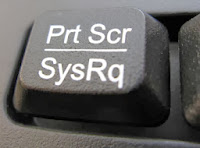We just returned from two days at the Bajothang HSS book fair, where we displayed and distributed the
Rigsum Sherig Collection to many schools outside of Thimphu: School principals, librarians, teachers and staff from nine dzongkhags visited the Rigsum Sherig Collection tent: Chhukha, Dagana, Gasa, Paro, Punakha, Thimphu, Trongsa, Tsirang, and Wangdue.
 |
| Teacher from remote Lungtengang PS downloads the collection |
 |
| Lots of interest from principals, teachers, and students |
Teachers were eager to gain access to quality offline learning resources. Many have told us that the Internet connection at their school was more in theory than in practice (we learned that in some areas, 3am-6am was the only time to attempt sending an email!). Other schools were so remote that even mobile reception was insufficient. For teachers and students in such schools, the Sherig Collection was perceived as a life-changer. At last, teachers and students will have fast access to digital encyclopedias that do not cost a fortune and do not need to be kept locked behind glass doors. More than 2,000 Khan Academy videos in maths and sciences will provide teachers with new ways of teaching existing materials, and for students, ways to strengthen their knowledge and expand it, while keeping their curiosity healthy.
Nearly all schools that visited our tent reported having computers for students to access. While a few schools have only 1-2 computers for students, many others have a computer lab. School computers range from old models to newer ones, from those with Windows XP to those with Windows 7. Some visitors were surprised to learn that the Sherig Collection will work on even old computers running Windows XP.
Many of the teachers and principals who visited had an external hard-drive or a laptop with them. They were therefore able to copy the Sherig Collection (approximately 25–30 min), and take it back to their schools. The demand was so high, that at some point we had 4 or 5 disks attached to our computers at the same time!
An additional benefit is that these Sherig-Collection-holding-schools now serve as contact points for nearby schools. For example, the principal of Gasa Primary School, Mr. Pema Dorji, will be distributing the software to all four schools in Gasa. Mr. Passang Tshering at Bajothang HSS has been distributing the Sherig Collection to many schools in the Wangdue-Punakha area, as well as assisting fellow teachers with ideas and tips about using the collection.
Our display was also visited by several officers from the Ministry of Education's
Department of Curriculum Research and Development. They too now have the collection and will serve as a distribution point for schools in Paro. Executive director of the
Bhutan Canada Foundation along with a Canadian teacher have expressed much interest - we hope that they can help spread the collection to schools with BCF teachers.
The Sherig Collection can be used in many ways. Students can be instructed to conduct research on a particular topic during the weekly IT session. A staff room computer can help teachers improve their lesson plans. One of the early adopting teachers of the Sherig Collection shared that he uses a projector to show students a Khan Academy video during class.
 |
| DCRD Director getting a tour of the Sherig Collection |
It was a busy two days, with plenty of visitors, demos, downloading, and interactions. We have also collected wish lists for further improving the collection.
Educators who missed the Bajo fair and the earlier
information session in Thimphu are welcome to visit us at the Rigsum Research Lab and obtain the collection.
The
Sherig Collection Facebook group, intended for sharing information and experiences, already has over 100 members, including teachers, principals and other education/knowledge seekers. The group is fairly active and we invite teachers, librarians, principals, curriculum developers and anyone interested in getting their school or organization on board.


We extend our many thanks to Bajo teacher
Mr. Passang Tshering for organizing the Sherig tent and for the wonderful hospitality.























